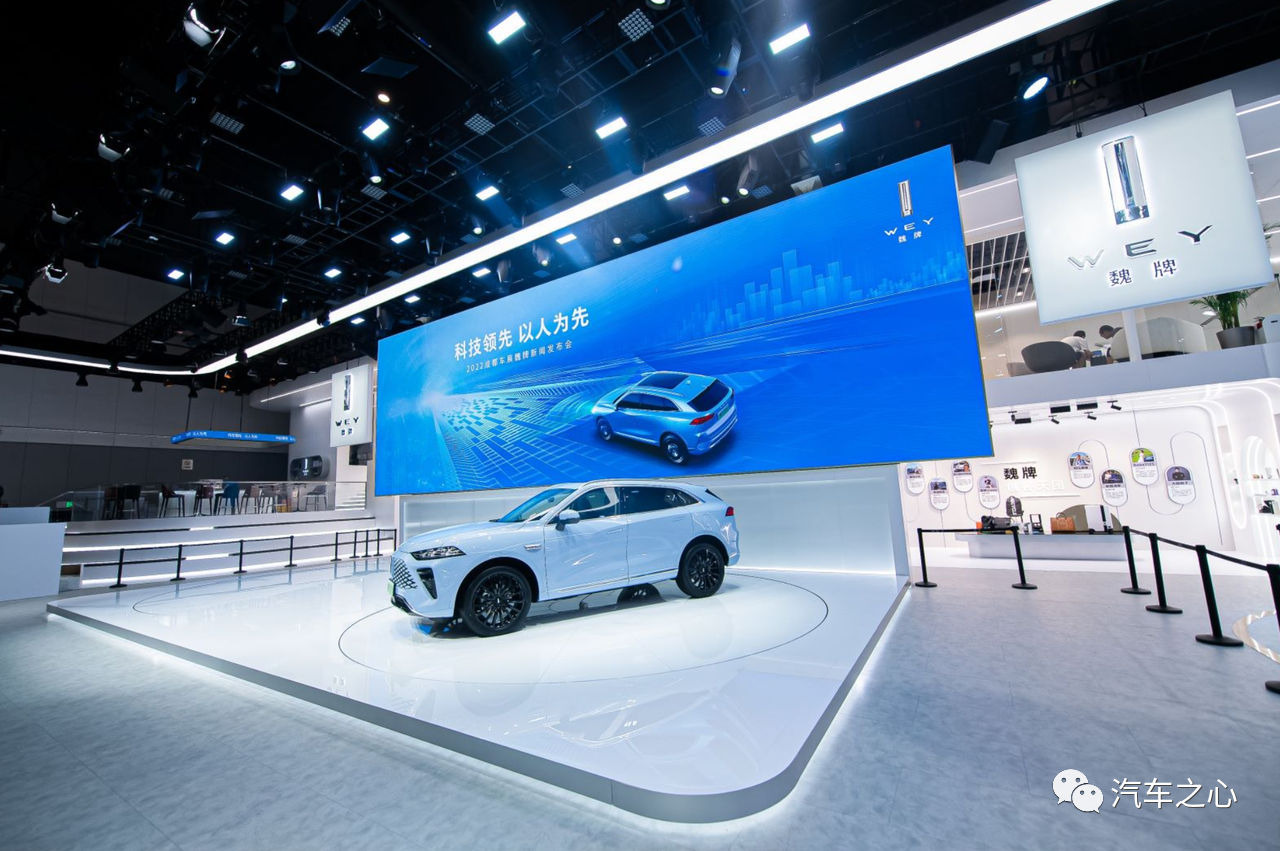Author: Zheng Senhong
“There is no old or new power, only old or new technology.”
Against the backdrop of sustained outstanding performance by new energy vehicle players, Qiao Xinyu, CMO of Great Wall Wei brand, attempted to overturn the impression of traditional automotive companies’ conservatism in electric vehicle transformation.
As the new energy vehicle players rose rapidly, Wei brand aims to catch up or even surpass them in a shorter timeframe and a more direct path.
In June 2022, Wei brand announced its “Oil Brake” plan, which means that all vehicles under Wei brand will be equipped with the Long Endurance Smart DHT PHEV architecture from this year, indicating that Wei brand, founded nearly six years ago, is officially transforming into a new energy vehicle brand.
Despite its ups and downs, from the safe and luxurious VV series to the smart DHT coffee series, Wei brand has expanded the boundaries of Great Wall every step of the way.
If a comprehensive transformation to electrification is only Wei brand’s competition against new energy vehicle players in the same lane, then the promotion of intelligent layout will be Wei brand’s “fuel booster” in this lane.
Especially for the landing of city-level assisted driving, XPeng, Wei brand, and Arctic Fox have successively announced the launch of City NOH within this year, but it is still in the beta phase.
At the Chengdu Auto Show this year, the Wei brand Mocha DHT-PHEV LIDAR version, equipped with city NOH, officially debuted, and the new vehicle will be mass-produced at the end of September. The related functions have already been launched in Beijing and Baoding, with plans to cover more than 10 cities before 2022.
As the first domestically produced city NOH landing model, the Mocha DHT-PHEV has opened a new chapter for Wei brand in the first year of city intelligent assisted driving.
Wei brand fired the first shot directly at the heart of the new energy players.
“Light Map” is a key shortcut
As a key component of intelligent driving, the complexity of urban road scenes is one of the biggest challenges for City NOH, with more intersections, lane changes, pedestrians and other factors than highway NOH.
For example, at an irregular traffic light intersection, facing different directions of traffic signals, it is inevitable and urgent to solve the scene of which lane to drive and which traffic signal to follow.
XPeng CEO, He XPeng, once believed that city-level assisted driving is definitely a challenge, but this is a process.
To this end, many automakers will use high-precision maps to solve these problems. For example, through high-precision maps, they can clearly grasp the locations of traffic lights, which traffic signal indicates which road, and so on.
Compared with ordinary navigation maps, high-precision maps have an accuracy of centimeters and provide information on dozens or even hundreds of elements, including roads, streetlights, guardrails, and more, in addition to traffic light recognition.However, restricted by national policies, the approval of high-precision maps in urban areas is not an easy task. Even if the approval is granted, it is difficult to achieve scale collection in a short period of time. Unlike Robotaxi, which usually only needs to cover the needs of high-precision maps in a few tens of kilometers, mass-produced cars require a scale based on the number of cities.
Implicitly, there are certain limitations in the collection cost, update efficiency, and national policy supervision of high-precision maps, which ultimately leads to the unpredictability of the implementation of NOH in urban areas.
But if we can rely less on high-precision maps and get rid of these limiting factors, allowing vehicles to rely on their own fusion perception to achieve the function of NOH in urban areas, will the implementation become more controllable?
In fact, the reason why WEY became the first mass production brand with the ability to connect highways to urban auxiliary driving is due to the solution provided by HoloMatic, an automatic driving company under Great Wall Motors, which emphasizes the technology route of “heavy perception, light map.”

Going against the mainstream route, WEY believes that it is difficult to surpass others using the same technology in the same period of time when facing various comparable resources such as human resources and capital. Therefore, WEY invested in the heavy perception and light map route.
Internally, WEY believes that this route is the same as Tesla’s technology route in North America, both based on efficient learning and high-performance perception technology solutions such as Transformer, which avoids the high-precision map problem that currently hinders Waymo.
Pan Xing, the chief technology officer of HoloMatic, said that through the backbone data calculation and the multi-modal fusion of BEV Transformer, the problem of matching between multiple sensors and cross-sensor tracking is solved, achieving multi-sensor fusion lane recognition on urban roads, such as obstacle detection, lane detection, drivable area segmentation, traffic sign detection, and so on.
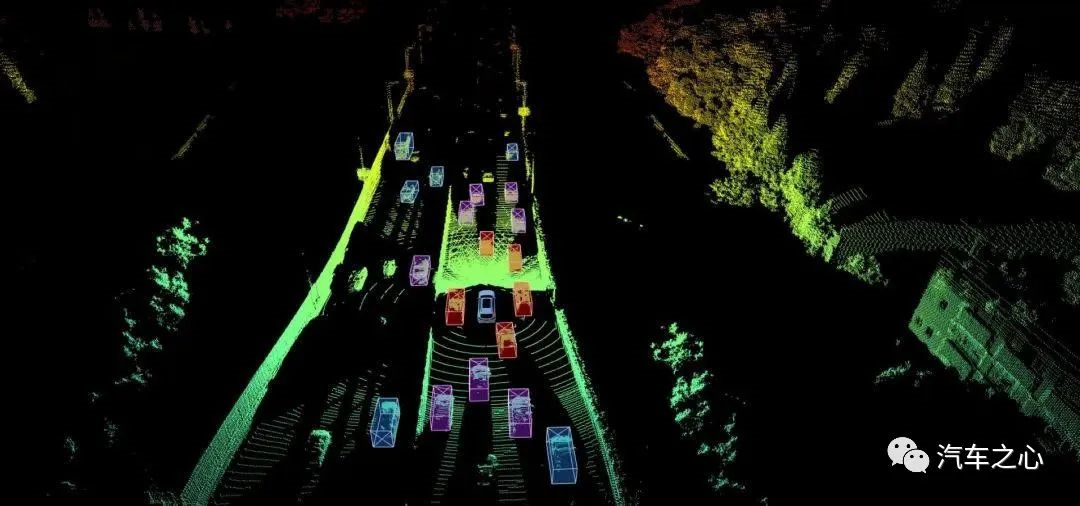
In addition, MANA (Xuehu) can also assist the driving system of Mocha DHT-PHEV laser radar version to perceive with higher accuracy, similar to human decisions, with higher efficiency in annotation and simulation verification.
For HoloMatic, MANA is a whole set of data processing tools based on massive data, including data annotation, algorithm models, test verification systems, simulation tools, and computing hardware, which is equivalent to the core driving force for the evolution of all HoloMatic’s products and the killer in the intense competition of urban navigation-assisted driving that HoloMatic is about to face.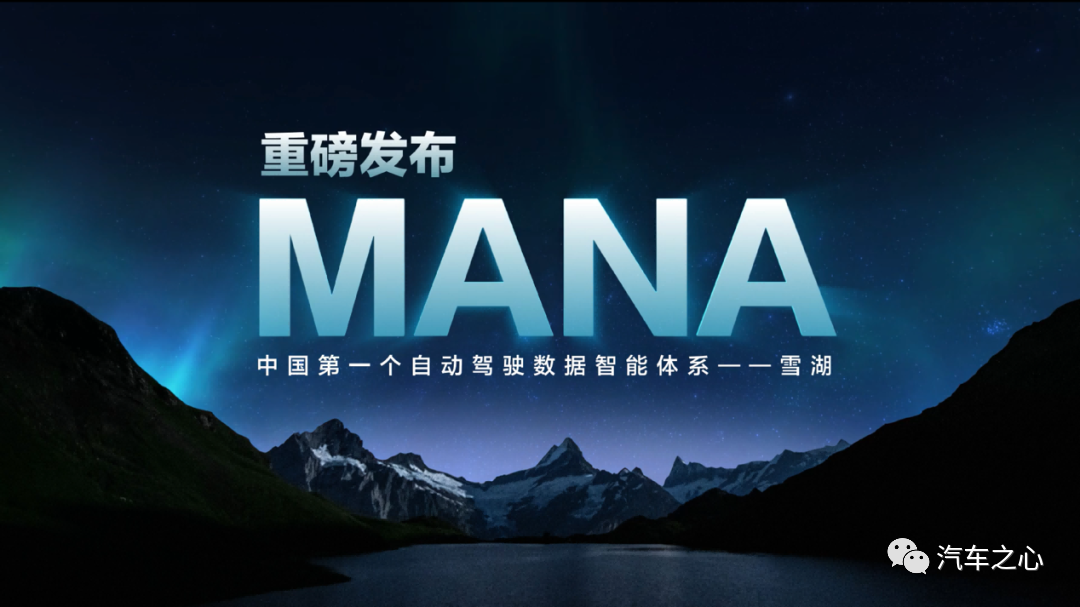
According to Pan Xing, the decision-making process of the MANA perception system is simulated based on the human brain, analyzing the decision-making habits of different drivers, and continuously learning through data. At present, the feedback that this system can obtain is also automatically learned, which includes cultivating corresponding decision-making models due to the driving style of the driver.
As of now, the accumulated learning time of MANA has reached 300,000 hours. According to driving habits, this is equivalent to a human driving experience of 40,000 years, and it can achieve full coverage of roads from level 1 to 5.
Compared with the data disclosed at HAOMO AI DAY in April this year, MANA has accumulated 100,000 hours of learning in less than half a year, equivalent to a virtual driving experience of 20,000 years for human drivers.
In other words, MANA has not only accumulated a certain amount of data collection but is also still in a rapid “growth” stage.
Data is the core of autonomous driving competition and the most critical indicator in the iteration and competition of autonomous driving systems.
For example, Tesla’s millions of vehicles travel on daily roads, collecting large-scale raw data, which provides core resources for Tesla’s future technological development.
The “4万年驾龄的老司机” in Weipai City NOH has already covered ten classic urban scenes, including intersection turns and game theory, and can effectively recognize arrow lights, round cake lights, yellow lights, and combined waiting area lights. Through motion game theory, it can effectively pass through crossroads, T-junctions, and X-shaped intersections.
For the problem that Weipai cannot directly achieve large-scale urban coverage without relying on high-precision maps, Pan Xing explained that although Weipai City NOH does not rely on high-precision maps, it still needs to add some additional data to the standard SD Map (ordinary navigation electronic map).
The difference between the two is that the precision of SD Map is 10-20 meters, which is widely used in vehicle navigation, while high-precision maps add road gradients, curvatures, and lane information, with an accuracy of less than 1 meter, and are used for ADAS-assisted driving, and the amount of work required for the latter is also more tedious than the former.
Refuse to follow the crowd, make the most suitable choice
Without the support of high-precision maps, the importance of perception hardware can still be seen from the literal interpretation of “重感知” (heavy perception).
Weipai will adopt a perception solution of lidar + camera + millimeter-wave radar, which is actually different from Tesla, which relies solely on cameras for its visual system in the same technological line.
The Mocha DHT-PHEV lidar version is equipped with a total of 31 perception sensors:- Two CruisinAuto 125-line LiDARs
- Five millimeter-wave radars
- Twelve ultrasonic radars
- Twelve million-pixel cameras

Equipped with the two LiDARs, the FOV of the MG DHT-PHEV reaches 170°, and the detection range reaches 180m horizontally, compared to a single LiDAR FOV of only 120°. The wider field-of-view provides a larger scanning range, resulting in increased safety, reliability, and accuracy in perceiving complex city environments, such as for close-range lane changes, and avoidance of obstacles crossing the road ahead.
Similar to the layout of the LiDARs in the XPeng G9, the LiDARs of the MG DHT-PHEV are also mounted under the front headlights. This layout safeguards against the blind spots for low-lying obstacles in the near field, while also considering the aesthetics of the design.
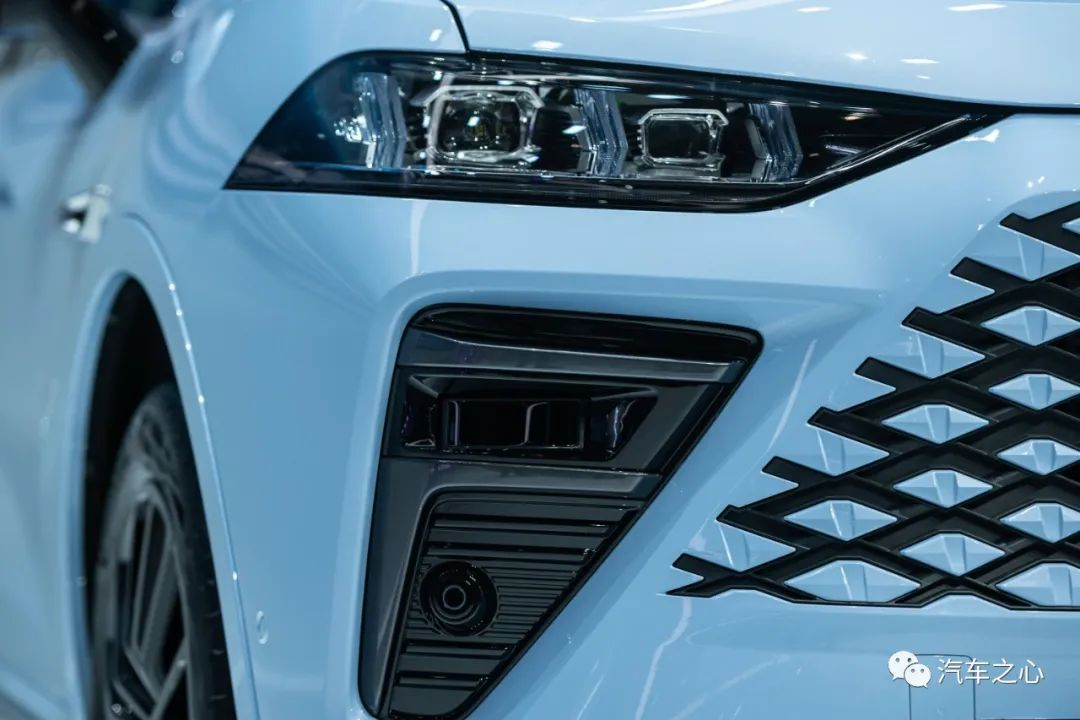
However, this installation location will also make the LiDARs more susceptible to dirt and other contaminants, which can impact their accuracy. Thus, higher demands are put on the cleaning system of the LiDARs, while in the case of collision, it may cause high replacement costs for the user.
The position of the LiDARs has always been a contentious issue, whether mounted on the roof, bumper, or hood, each method has its respective merits and drawbacks.
Gu Weihao, CEO of Moma, pointed out that in terms of safety, roof-mounted solutions may result in blind spots when detecting objects at close range, failing to completely meet the requirements for perceiving sudden changes in urban driving scenarios. In order to fully consider the realistic urban road conditions of users, we have made arrangements for the placement of the LiDARs, which fully leverages their advantages to avoid more dangerous and complicated accidents.

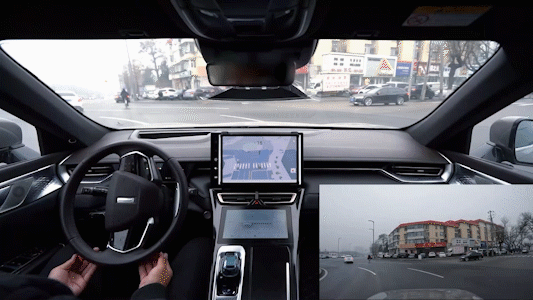
Based on the higher reliability requirements for LiDARs, the CruisinAuto LiDARs equipped in the MG DHT-PHEV adopt a highly integrated design and undergo a series of reliability tests such as mechanical impacts and random vibrations, which can meet the safety, reliability, and service life requirements of the MG DHT-PHEV in both high-speed and complex urban road scenarios.
In addition to the hardware reliability guarantee, Qiao Xinyu stated that regarding the subsequent use and maintenance costs of LiDARs, WeiPai will provide users with an additional guarantee solution, the details of which will be announced when the vehicle is launched.Behind the perception hardware is Maovii’s self-developed “Little Magic Box 3.0” as the computing platform, equipped with the third-generation Qualcomm Snapdragon Ride platform, including the 5nm Qualcomm Snapdragon 8540 and 7nm Qualcomm Snapdragon 9000 chips, with a single-board computing power of 360 TOPS, known as the “ceiling of current single-chip computing power”.
According to reports, the third-generation Qualcomm Snapdragon Ride platform has an average power consumption of only 5.5 TOPS/W, and is expected to become the most energy-efficient self-driving computing platform in mass production worldwide.
Currently, most automakers prefer NVIDIA Orin for intelligent driving chips, but when it comes to why Maovii chose Qualcomm, Gu Weihao gave this answer:
First, in terms of product technology itself, Qualcomm chips have lower overall power consumption and higher effective computing power-to-power ratios.
Second, in terms of product continuity, choosing a chip and a platform is a sustained, continuous collaboration, and the product planning of the Qualcomm series of chips is conducive to Maovii’s future overall product expansion.
Third, in terms of technical support capabilities, Qualcomm has been honing its skills in the field of mobile chips for many years and has the ability to support technology with mobile phone manufacturers, which is Qualcomm’s advantage.
In short, Maovii’s choice of Qualcomm is based on comprehensive considerations of product technology, expandability, and support capabilities, and Qualcomm also has certain advantages in technology leadership and cost-effectiveness.
Gu Weihao also revealed that in the future, NVIDIA, Horizon, and other chip companies are also potential partners of Maovii.
Thanks to this software and hardware solution, Wei Pai believes that the Mocha DHT-PHEV will perform well in the Chinese urban market, not inferior to Tesla and independent new forces.
Pan Xing added that except for some very narrow hutong scenes in Beijing, Maovii can achieve NOH intervention on main roads and major streets in the city.
From official test data, its intersection pass rate exceeds 70%, lane change success rate exceeds 90%, and traffic flow handling capacity is as high as level 4.
Therefore, Mocha DHT-PHEV’s lidar will be the first domestic vehicle to achieve city traffic light recognition and intersection automatic turning control capabilities.
Qiao Xinyu said that the so-called “laser radar year” is not about embedding laser radar hardware, but about truly opening, covering, and being safe.## Completing the last piece of Wei brand
Six years ago, Wei brand, bearing the founder’s surname of Great Wall Motors, was officially launched, positioning itself as the pioneer of Chinese luxury SUVs.
Six years later, with the trend of new energy, Wei brand has become a strategic brand of Great Wall Motors in the new energy market, as well as its vanguard in transformation.
- The first gasoline car equipped with Qualcomm 8155 chip is Wei brand Mocha;
- The first PHEV with pure electric range exceeding 200 km is Mocha DHT-PHEV;
- The first city NOH system in mass production is Mocha DHT-PHEV with lidar version;
- …
From gasoline cars to new energy track, every substantial leap of Wei brand not only represents the achievement of Great Wall Motors as the representative of technology guard, but also a milestone in the industry.
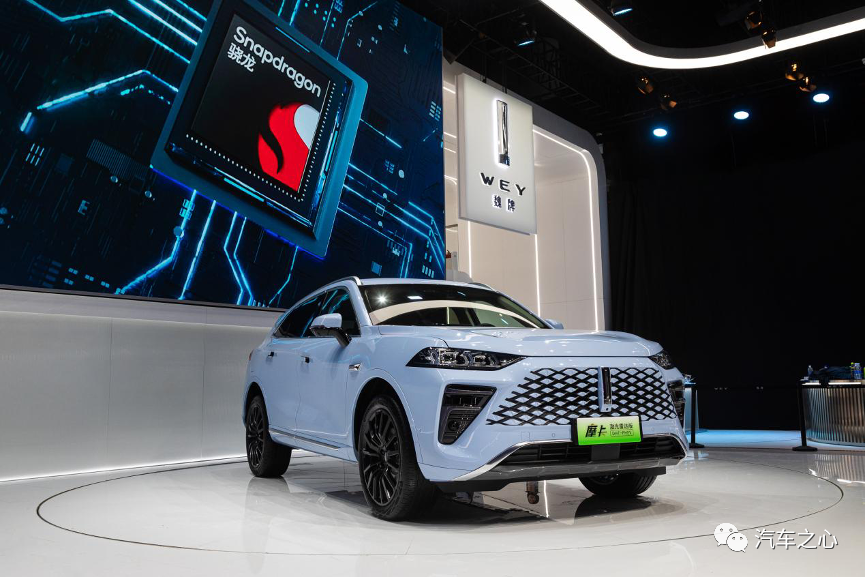
Qiao Xinyu stated that in the era of intelligent new energy, in the first half, Wei brand achieved high-end new energy market position with long-endurance intelligent DHT system, and in the second half, the intelligent driving assistance system for urban scenarios will become the key to winning the intelligent travel.
From a high-end brand to a high-end new energy brand, from “New Generation Intelligent Vehicles” to the brand-new category of “0 Anxiety Intelligent Electric Vehicles”, Wei brand is bound to blaze a path of success for the Great Wall brand.
In the eyes of Wei brand CEO Li Ruifeng, Wei brand is definitely no less than the second entrepreneurship.
Based on more than 30 years of technical foundation of Great Wall, and with the mission of high-end intelligent new energy vehicles, Wei brand has developed a new energy architecture with full-speed range efficiency, driving experience, and intelligent level – Intelligent DHT.
Based on localized research and development, and intelligent full-stack self-developed, Wei brand took the decisive intelligent driving city NOH as the cooperation direction, which marks the key node of the second half campaign of intelligent driving.
Nowadays, Wei brand holds two trump cards in the new energy track – Intelligent DHT and Urban NOH, with the most core competition elements in the current new energy track.
Clarifying the new direction of hybrid, Wei brand is exploring the transformation and following new tracks; accelerating the intelligent layout is its strategy to win the high-end new energy market.
In the past, Wei brand’s main competitors were the traditional car companies such as Geely, Changan and BYD, while now it is targeting the market of BBA and new forces with a price range of 300,000 yuan, which is the most competitive high-end market in the entire segment.
It is evident that the brand remains the same, but the opponent is not the same as before.In the race to aggressively enter the high-end new energy vehicle market, Wei Brand is fully prepared.
In 2022, perhaps Wei Brand has already won a ticket to the new energy race finals.
This article is a translation by ChatGPT of a Chinese report from 42HOW. If you have any questions about it, please email bd@42how.com.
